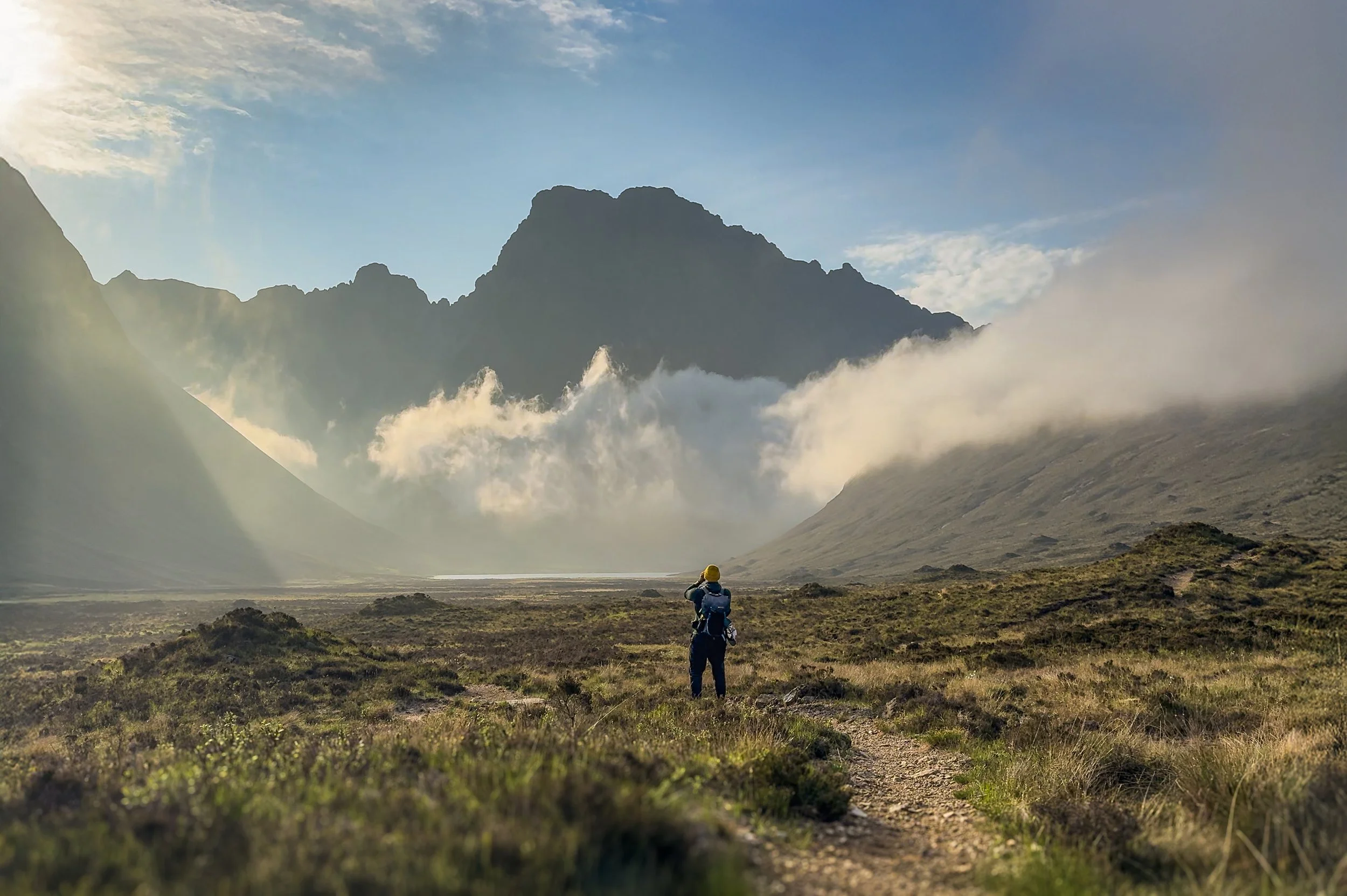HOW DO YOU DO IT?
What It Really Means to Be a Travel Photographer
Someone asked me this the other day..
"Why do you do spend so much time and effort just for a photograph?"
People often think being a photographer of landscapes and wild places means standing in front of some epic golden hour view - tripod set, camera dialled in, beautiful light washing over everything like a scene from a movie.
Sometimes it is and yeah - those moments are epic.
But that’s not really the heart of it. Not for me. I'm just as likely to be out in harsh midday light or sideways rain and hat stealing wind.
Being an outdoor adventure and lifestyle photographer isn’t just about chasing light and it’s never for me about racking up 'bangers for the gram' though it’s a bonus if I get a shot that is worthy of being called that.
It’s about capturing something deeper. Something honest.
Seems like everyone says that these days but I've always been that way before it was cool to say it.
It’s about trying to photograph the feeling a place gives you - not just what it looks like. When I’m out in the wild - whether it’s cliffs battered by sea storms, a lone tree twisted by time, or a path vanishing into fog - I’m not just looking for a “good shot.” I’m looking for the essence of that place. Its personality. Its identity. The things that describing words don’t quite capture.
A good image should be a conversation
By that I mean between the subject and me initially and then between the image and the viewer later.
That’s always in my mind. And so there’s this moment that happens when I’m out there. The noise drops. The mental to-do list disappears. And suddenly I’m not just looking at the landscape - I’m in it.
I start to notice things. Details that only appear when you are fully immersed in the moment.
The way the wind moves the grass like it wants to be noticed.
The lines in a rock that speak to some geological event but to me look like scars.
The way sunlight spills through the trees, like spotlights on a stage.
These aren’t just visual elements. They’re emotional cues - signs of what the land has been through, and what it’s trying to say.
So I shoot with that in mind. I look for foregrounds that tell a story. Leading lines that guide your eye - and maybe your heart - toward something more. I search for symbols: a broken fence, a wildflower, a forgotten trail. Not just because they look cool in the frame - but because they speak to a deeper story and that means something to me.
Photography as Reflection
Here’s the other thing: When I’m standing out there under a big sky, surrounded by trees, waterfalls, peaks, silence - I think about life. Like, really think about it.
The landscape becomes a mirror. What I see out there helps me make sense of what’s in here.
I’ve stood on ridges and thought about failure. I’ve watched waves crash and thought about persistence. I’ve sat on white sand beaches and thought about those I’ve lost. I’ve seen light break through cloud and felt hope hit me square in the chest.
It’s like the more I connect with the natural world, the more I reconnect with myself. So when I finally press the shutter, it’s not just a photo. It’s a piece of that moment. A little reflection of something bigger - outside and inside.
That’s What I’m Really Trying to Capture
Not just the view. Not just the light. But the feeling of being there.
The sense that this place - this wild, rugged, quiet, chaotic, beautiful place - has something to say.
And maybe… if I get the shot right, you’ll feel it too.
That’s what landscape and outdoor photography means to me. It’s not a postcard from some wild place. It’s a conversation.
And every photo I take is a part of that - between the earth, the light, and whatever version of me showed up that day, ready to listen.

